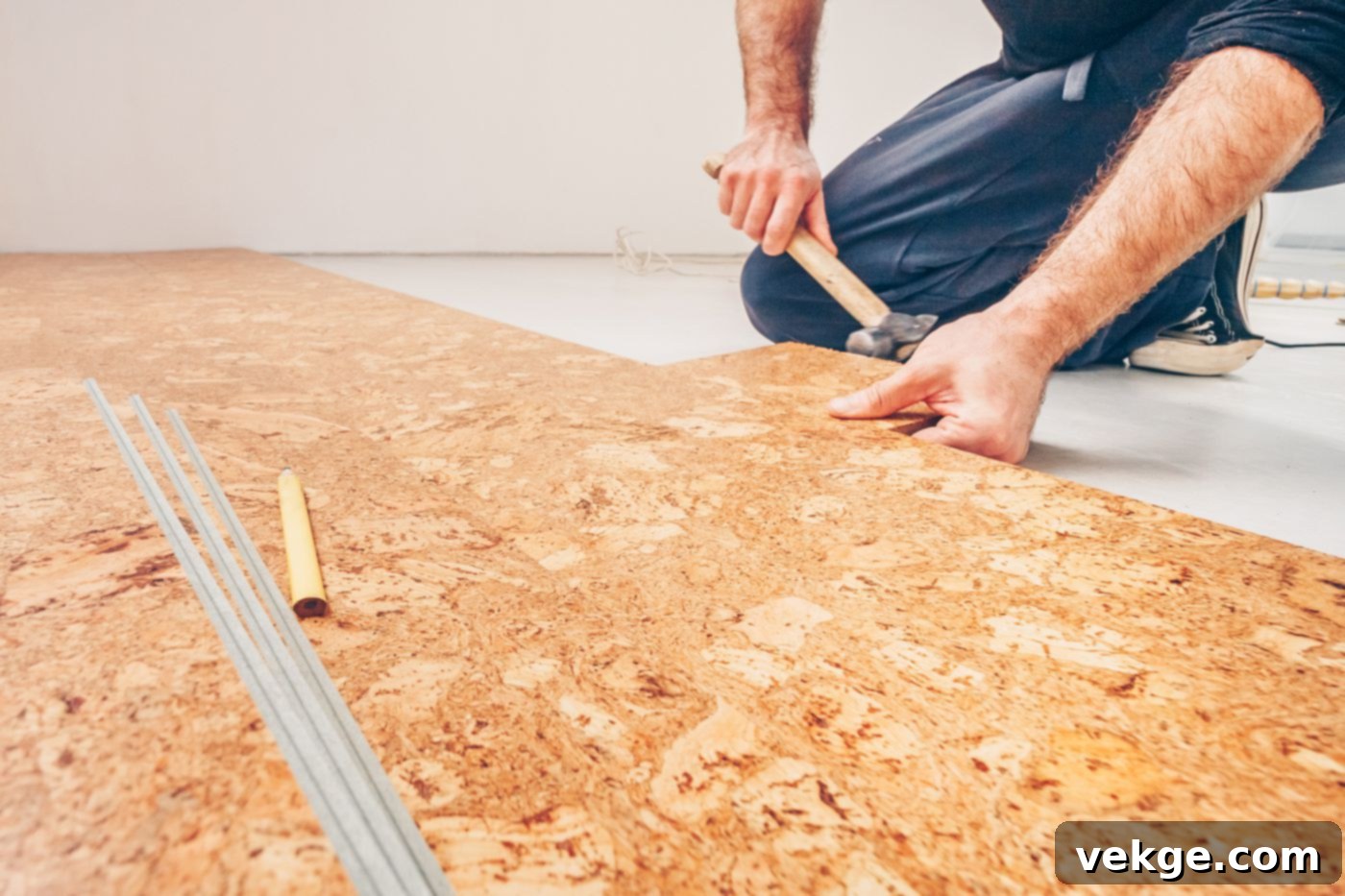Affordable Hardwood Floors: Your Ultimate Guide to Budget-Friendly Options & Installation Savings
Hardwood floors have long been cherished for their timeless elegance, warmth, and the significant value they add to any home. They offer unmatched durability and a classic aesthetic that can elevate the entire atmosphere of a living space. However, the perceived high cost of installing traditional hardwood can often be a major hurdle for homeowners operating on a tight budget, leading many to believe that this dream flooring is out of reach.
The good news is that achieving beautiful hardwood floors doesn’t necessarily require a massive financial outlay. With a strategic approach, smart shopping, and a bit of creative thinking, it is entirely possible to get the stunning hardwood look you desire without compromising your financial stability. This guide is designed to empower you with the knowledge and strategies needed to make that a reality.
In this comprehensive article, we will delve into a wide array of budget-friendly tips and practical strategies to help you find and install high-quality hardwood floors for your home. From meticulously evaluating your specific flooring needs and researching various suppliers to exploring innovative alternative materials and considering reclaimed options, we’ll cover all the essential considerations to keep your project costs firmly in check. Whether you’re undertaking a complete renovation of an existing space or planning the flooring for a brand-new home, these expert tips will guide you toward achieving the coveted hardwood aesthetic at a price that perfectly aligns with your budget.
Evaluate Your Flooring Needs for Cost-Effective Choices
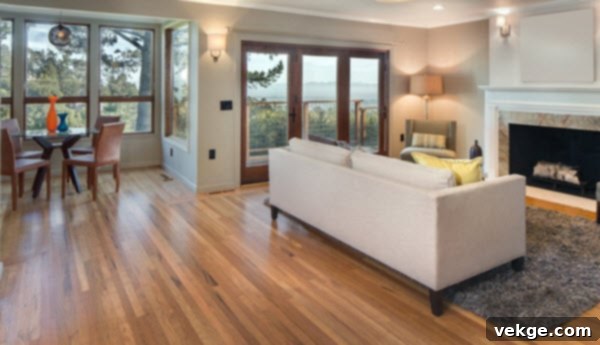
The crucial first step in securing budget-friendly hardwood floors is to meticulously assess your specific flooring needs and aesthetic preferences. This initial evaluation is paramount as it will directly influence the type, species, grade, and quantity of wood that best suits your space and, most importantly, your financial constraints. Careful planning here can prevent costly mistakes down the line.
Begin by accurately measuring the dimensions of the area you intend to cover. Precise measurements are essential to calculate the total square footage required, ensuring you purchase neither too much (leading to wasted material and money) nor too little (causing delays and potential issues with matching new batches). Beyond dimensions, visualize the desired look and feel you wish to achieve. Do you envision a light, airy stain to brighten a room, a rich, dark hue for a sophisticated ambiance, or a versatile medium tone? Consider plank width – wide planks offer a modern, expansive feel, while narrower planks provide a more traditional look. Also, think about the finish; matte, satin, or gloss each contribute differently to the room’s character and maintenance.
Furthermore, delve into the specifics of hardwood species. Do you require a particular species for its inherent durability or its unique aesthetic grain? For instance, highly durable species like Oak, Maple, or Hickory are excellent choices for high-traffic areas, thanks to their higher Janka hardness ratings. Conversely, softer woods such as Pine or Fir, while more prone to dents, are often significantly more affordable and can be ideal for lower-traffic zones like bedrooms or studies. Answering these questions upfront will streamline your selection process and make it considerably easier to pinpoint the perfect, budget-conscious hardwood flooring option.
It’s also imperative to factor in your household’s lifestyle and typical traffic patterns. Homes with active children, pets, or frequent entertaining will necessitate a more robust and scratch-resistant hardwood species. Areas like entryways, living rooms, and hallways, which experience heavy foot traffic daily, will greatly benefit from a harder wood that can withstand the rigors of constant use. Conversely, bedrooms, formal dining rooms, and other lower-traffic spaces may be suitable for softer, more affordable options without compromising longevity. Don’t forget to inspect your subfloor; any necessary repairs or leveling can add to costs, so it’s best to identify these needs early. Taking the time to thoroughly map out your needs and preferences will undoubtedly pay off immensely when you begin the shopping phase, ensuring you make informed and economical decisions.
Research Suppliers and Compare Prices for Maximum Savings
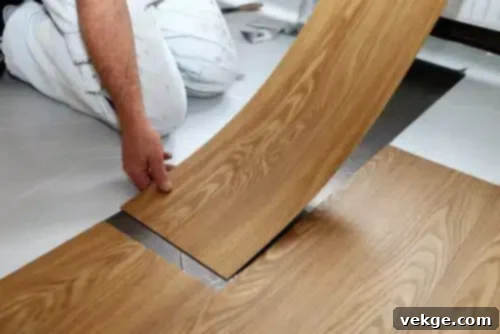
Once you have a clear understanding of your specific flooring requirements, the next crucial step is to embark on thorough research of various suppliers and diligently compare prices. The cost of hardwood flooring can fluctuate significantly based on factors such as the wood species, its grade (e.g., clear, select, common), and, crucially, where you choose to make your purchase. Investing time in exploring all available options can lead to substantial financial savings, making your dream floors more accessible.
Begin your search by contacting local lumberyards, major home improvement stores, and specialized flooring retailers within your area. These different types of suppliers offer unique advantages. Lumberyards often provide higher quality wood and expert advice, while big box stores frequently have competitive sales and promotions. Specialty retailers typically boast a wider selection and specialized installation services. Obtain detailed quotes for the exact materials you are interested in. When comparing these quotes, look beyond just the cost per square foot. Factor in any additional fees for delivery, potential installation services (if you’re not DIYing), and any other hidden charges. Don’t hesitate to negotiate prices or inquire about ongoing sales, seasonal promotions, or bulk discounts that could significantly reduce the overall project cost. Many retailers are willing to work with customers, especially for larger orders.
Another excellent avenue for potential savings is to explore local wholesalers or lumber mills that sell directly to the public. These suppliers, by cutting out the middleman, often offer substantially lower prices compared to larger retail chains. This can be particularly advantageous if you are capable of transporting the materials yourself, thus saving on delivery fees. To locate these businesses, leverage online search engines using terms like “wholesale hardwood flooring [your city]” or “lumber mill direct sales.” Additionally, solicit recommendations from trusted friends, professional contractors, or experienced flooring installers in your community, as they often have insider knowledge of the best local sources. Remember, while direct sales can be cheaper, they might have minimum order quantities or fewer service options, so always clarify their terms of business.
Explore Alternate Hardwood Options for Budget-Conscious Homes
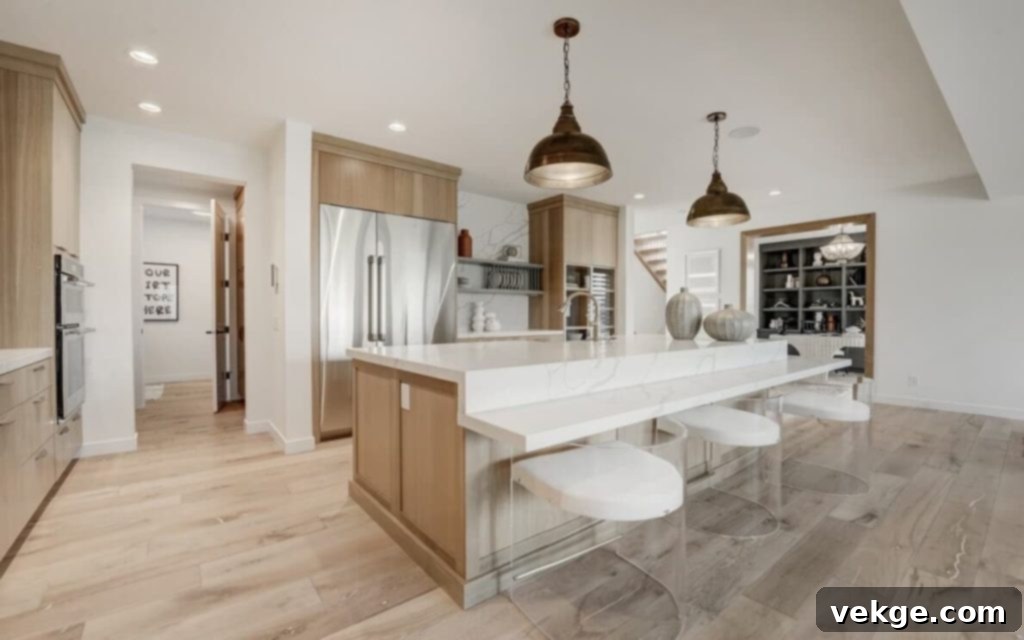
While solid hardwood floors represent a timeless and highly coveted choice, they are by no means the only pathway to achieving a stunning wood aesthetic in your home. For those navigating a tighter budget, a variety of alternate flooring materials can offer the same coveted look and feel at a significantly lower cost. Exploring these options can open up new possibilities and ensure your design vision is realized affordably.
Engineered Hardwood: A Stable and Stylish Alternative
Engineered hardwood flooring provides an excellent compromise between the natural beauty of solid wood and enhanced stability. It features a genuine, thin veneer of real hardwood laminated over multiple layers of high-quality plywood or a composite core. This innovative cross-ply construction makes engineered wood far more stable and resistant to warping or shrinking caused by humidity fluctuations than its solid counterpart. Generally, engineered hardwood is more affordable, particularly for species with thicker top layers. It can be refinished multiple times, depending on the thickness of the top veneer, much like solid wood, and is available in an extensive range of wood species, stains, and plank sizes, offering immense design flexibility.
Laminate Flooring: Durability Meets Design on a Budget
Laminate flooring is a highly durable and cost-effective synthetic material that expertly mimics the appearance of hardwood through advanced photographic printing and intricate embossing techniques. Constructed with a clear wear layer, a decorative design layer, a high-density fiberboard (HDF) core, and a stabilizing backing layer, laminate is exceptionally resistant to scratches, dents, and fading. It’s remarkably easy to install, often featuring click-lock systems perfect for DIY enthusiasts, and can cost anywhere from 50-75% less than solid hardwood. While laminate cannot be refinished, modern laminate floors have achieved remarkable realism, boasting incredibly authentic wood-like textures and appearances that are difficult to distinguish from real wood.
Bamboo Flooring: Eco-Friendly Elegance for Less
Bamboo is a rapidly growing grass, not a wood, but it has emerged as a highly popular and environmentally friendly alternative to traditional hardwoods. Celebrated for its sustainability credentials, bamboo is incredibly durable, often rivalling or even exceeding the hardness of many traditional wood species, particularly strand-woven varieties. It’s available in a diverse palette of colours and styles, from natural light tones to carbonized dark hues, and is frequently more budget-friendly than solid wood floors. The final cost can vary depending on the manufacturing process (horizontal, vertical, or strand-woven) and the overall quality, but bamboo presents a fantastic option for those seeking a distinct, wood-like aesthetic with an ecological conscience, all while adhering to a tighter budget.
Cork Flooring: Natural Comfort and Style
Cork is another exceptional sustainable flooring material derived from the bark of cork oak trees. It offers a unique blend of natural properties that can provide the look and feel of hardwood at a more accessible price point. Naturally moisture-resistant, cork is renowned for its exceptional comfort underfoot, acting as a natural insulator against both temperature and sound. Its inherent elasticity also makes it surprisingly durable and resilient to impacts. Cork flooring is typically easy to install, often available as floating or click-lock planks, making it a viable DIY option. It comes in a beautiful range of wood-inspired patterns, textures, and natural variations, making it a versatile choice to complement various design styles and enhance the cozy ambiance of any room.
When considering these fantastic alternatives, it’s crucial to thoroughly research their respective pros and cons, understand the varying quality levels available, and familiarize yourself with their long-term maintenance requirements. This diligent investigation will ensure you make the most informed and best choice for your home, lifestyle, and financial plan.
Saving on Hardwood Floors: Smart DIY and Timing Strategies
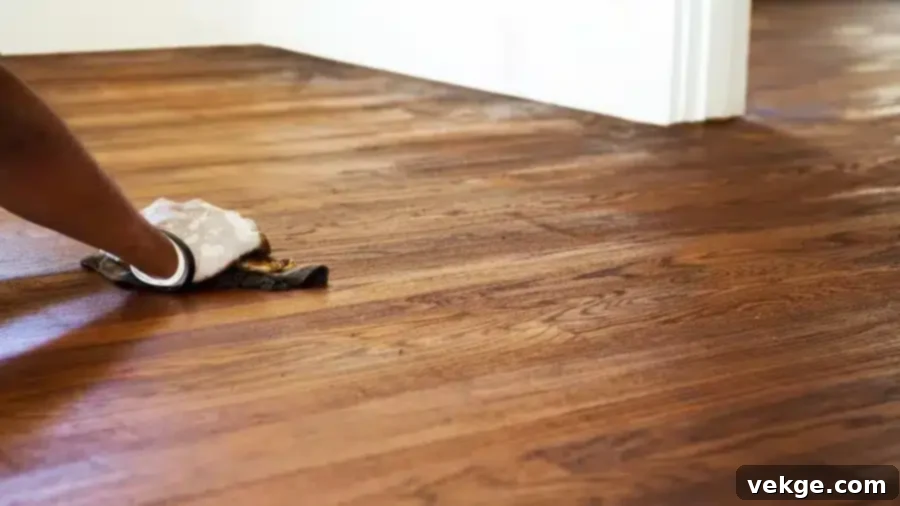
Beyond choosing the right material, significant savings on hardwood floors can also be found through smart sourcing and strategic project management. Two key areas to explore are utilizing reclaimed materials and considering a DIY installation, coupled with intelligent timing of your purchases.
Consider Reclaimed or Used Hardwood: Character and Value
For the ultimate in budget-friendly and character-rich hardwood floors, homeowners should definitely consider sourcing reclaimed or used materials. Reclaimed wood typically originates from historical buildings undergoing demolition, old barns, decommissioned factories, or other venerable structures. This wood possesses a distinctive, naturally weathered appearance and a rich patina that simply cannot be replicated in newly milled lumber. This type of hardwood is highly sought-after not only for its inherent sustainable qualities but also for its unique vintage charm and compelling backstory. Despite its desirability, savvy shoppers can often discover reclaimed wood at a considerably lower cost than brand-new, factory-fresh flooring. Look for these treasures at architectural salvage yards, specialized reclaimed wood suppliers, or even online marketplaces where individuals may be selling off materials from old homes. Be prepared that reclaimed wood might require more preparation, such as cleaning, de-nailing, and potentially professional milling, but the end result is a truly unique floor with unparalleled character.
Explore DIY Installation: Save on Labor Costs
One of the most substantial expenses associated with installing hardwood floors is the labor cost for professional installation. If you possess a reasonable level of handiness, are comfortable with home improvement projects, and have a good attention to detail, seriously consider tackling the installation yourself. Opting for a DIY approach can lead to monumental savings on your overall project budget. Hardwood flooring, especially modern click-lock or floating styles like engineered wood or laminate, can be relatively straightforward for a competent individual to install with the right tools and some fundamental carpentry skills. Many manufacturers provide detailed installation guides, step-by-step video tutorials, and online resources to walk you through the entire process, making it less daunting than it might initially seem.
You will need to invest in or rent some specialty tools, such as a miter saw, table saw, jamb saw, floor nailer (for traditional solid wood), knee kicker, tapping block, and pull bar, along with standard measuring tools and safety gear. However, the combined rental or purchase costs for these tools are often far less than the fee for hiring a professional installer. Keep in mind that while DIY installation is feasible for many, it may not be the optimal choice for highly complex floor plans, intricate patterns (like herringbone), or very large, challenging spaces that require precise cuts and transitions. In such scenarios, the potential for errors and increased material waste might make it more cost-effective in the long run to engage a professional hardwood flooring contractor, even with the added labor costs. For many homeowners, however, a bit of elbow grease and a commitment to learning can translate into significant savings on the overall project, giving you immense satisfaction from a job well done.
Time Your Purchases Strategically: Seize the Best Deals
Just like many other home improvement products, the cost of hardwood flooring can fluctuate considerably based on the time of year, economic factors, and retailer inventory cycles. By strategically timing your purchases, you can significantly increase your chances of taking advantage of seasonal discounts, major holiday sales, or other opportunities to secure better deals. This proactive approach can make a tangible difference in your budget.
Generally, the peak season for hardwood floor installations typically occurs during the spring and summer months. This is when homeowners are most actively engaged in renovation projects, and demand for flooring materials and installation services is at its highest. Consequently, prices tend to be elevated during this period. As the weather cools and demand naturally wanes in the fall and winter, retailers and suppliers frequently offer enticing discounts and promotions to clear out excess inventory and meet sales targets. Keep a vigilant eye on major home improvement sales events, such as Black Friday, Cyber Monday, Memorial Day, Labor Day weekends, and even end-of-year clearances. Many retailers leverage these periods as prime opportunities to offload older stock, introduce new collections, or offer compelling bundle deals that combine flooring with installation services. Additionally, sign up for email newsletters from your preferred flooring stores; they often send out exclusive coupon codes, announce bulk discounts, or offer special financing options (like 0% APR for a limited period) that can further reduce your overall costs or make large purchases more manageable.
Leverage Manufacturer Rebates and Incentives: Added Value
Hardwood flooring manufacturers are frequently keen to incentivize sales, promote specific products, or increase market share for certain wood species. Taking full advantage of available rebates, promotional offers, and other incentives can further stretch your budget when purchasing hardwood floors, turning a good deal into a great one. These programs are designed to attract buyers and can offer significant savings that many homeowners overlook.
Many reputable companies provide cash-back rebates or gift cards upon the purchase of a minimum quantity of their flooring products. These rebates can range from $100 to $500 or even more, depending on the brand, the product line, and the specific promotional period. It’s crucial to carefully review the fine print of these offers, understand the eligibility requirements, and promptly submit any required forms, receipts, or documentation to ensure you qualify for the rebate. Missing a deadline or overlooking a detail can mean missing out on substantial savings. Furthermore, manufacturers may also extend special financing options, such as 0% APR for periods ranging from 12 to 24 months, to make larger flooring purchases more accessible and manageable. This can be particularly beneficial if you don’t have the full amount available upfront but wish to avoid accruing interest charges. Some brands even go a step further by providing installation incentives, such as discounting labor costs or, in some cases, offering free installation with the purchase of their premium products. These comprehensive deals can be an excellent way to significantly reduce the total project expenses, making your dream hardwood floors an even more affordable reality.
Conclusion: Your Dream Hardwood Floors Are Within Reach
Achieving the timeless beauty and inviting warmth of genuine hardwood floors doesn’t have to be an unattainable luxury accompanied by a hefty price tag. By diligently applying the budget-friendly tips and smart strategies outlined in this guide, you can confidently find high-quality flooring options that perfectly align with your aesthetic preferences, functional requirements, and, crucially, your financial constraints.
From meticulously evaluating your specific needs and thoroughly researching various suppliers to creatively exploring robust alternative materials and timing your purchases with strategic precision, there are numerous effective ways to save significantly on your hardwood flooring project. Don’t be afraid to think creatively, ask insightful questions, and invest a little extra effort to uncover the best deals. With careful planning and informed decisions, your dream of beautiful hardwood floors can absolutely become an affordable reality, enhancing your home’s appeal and value for years to come.
